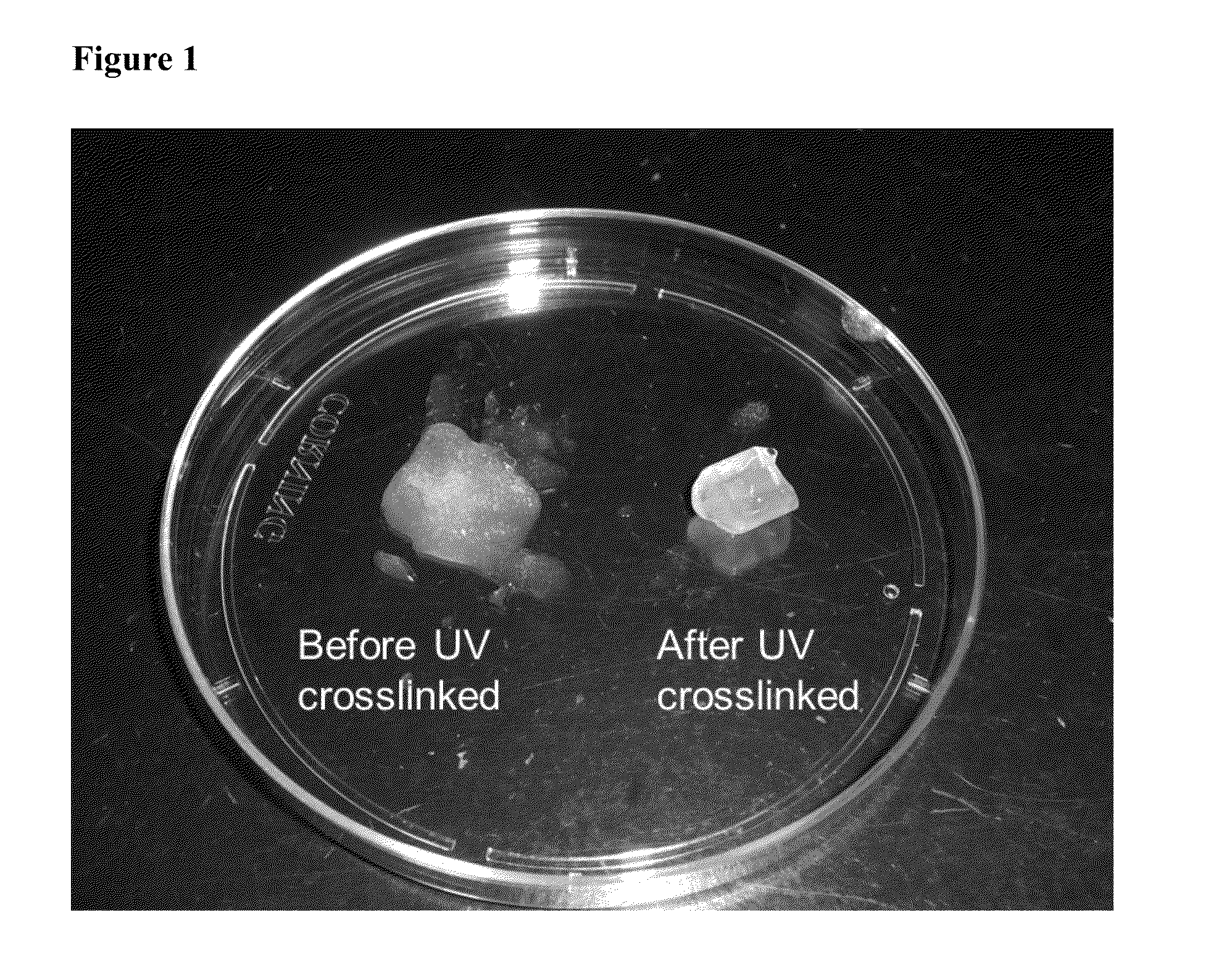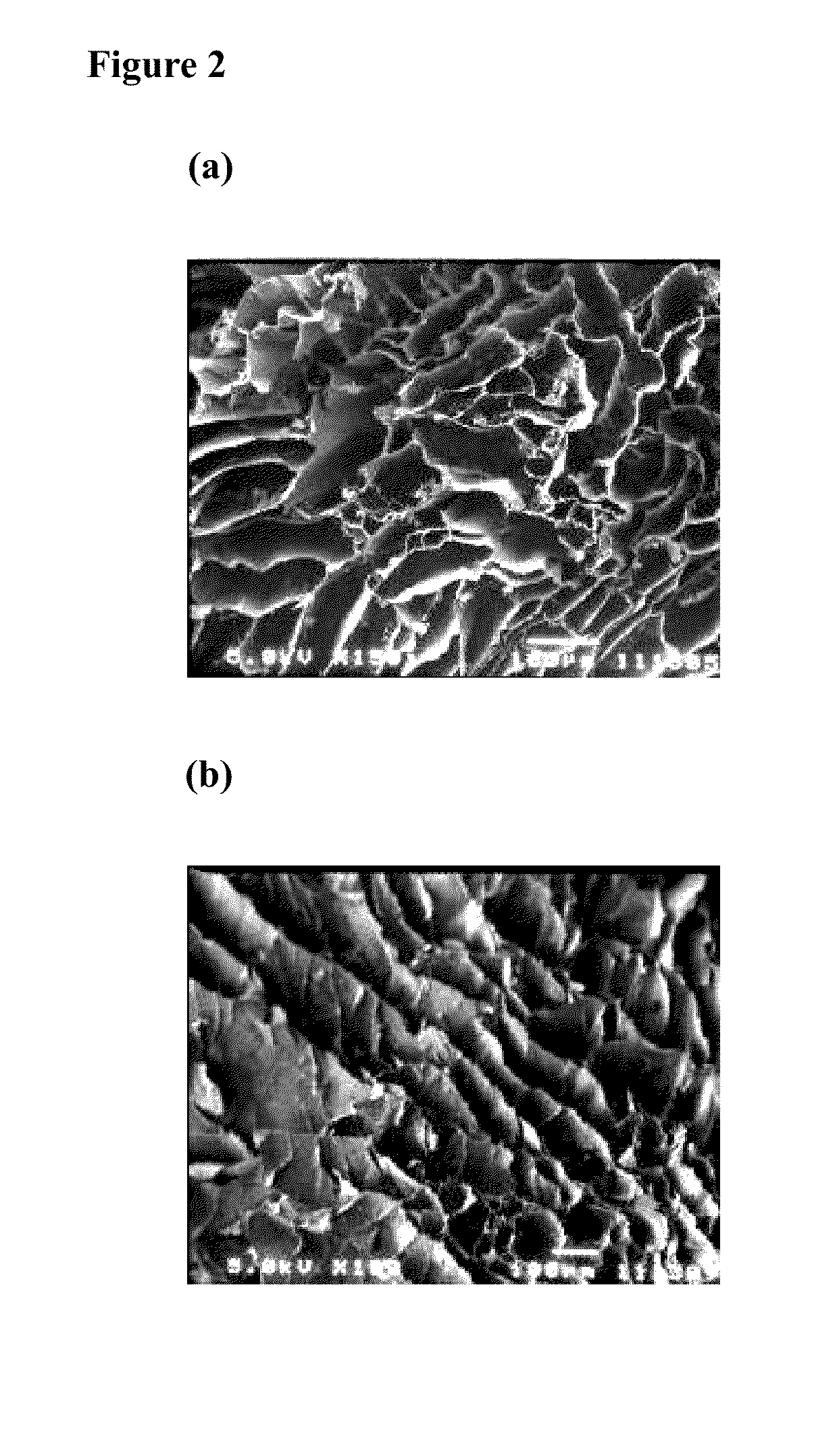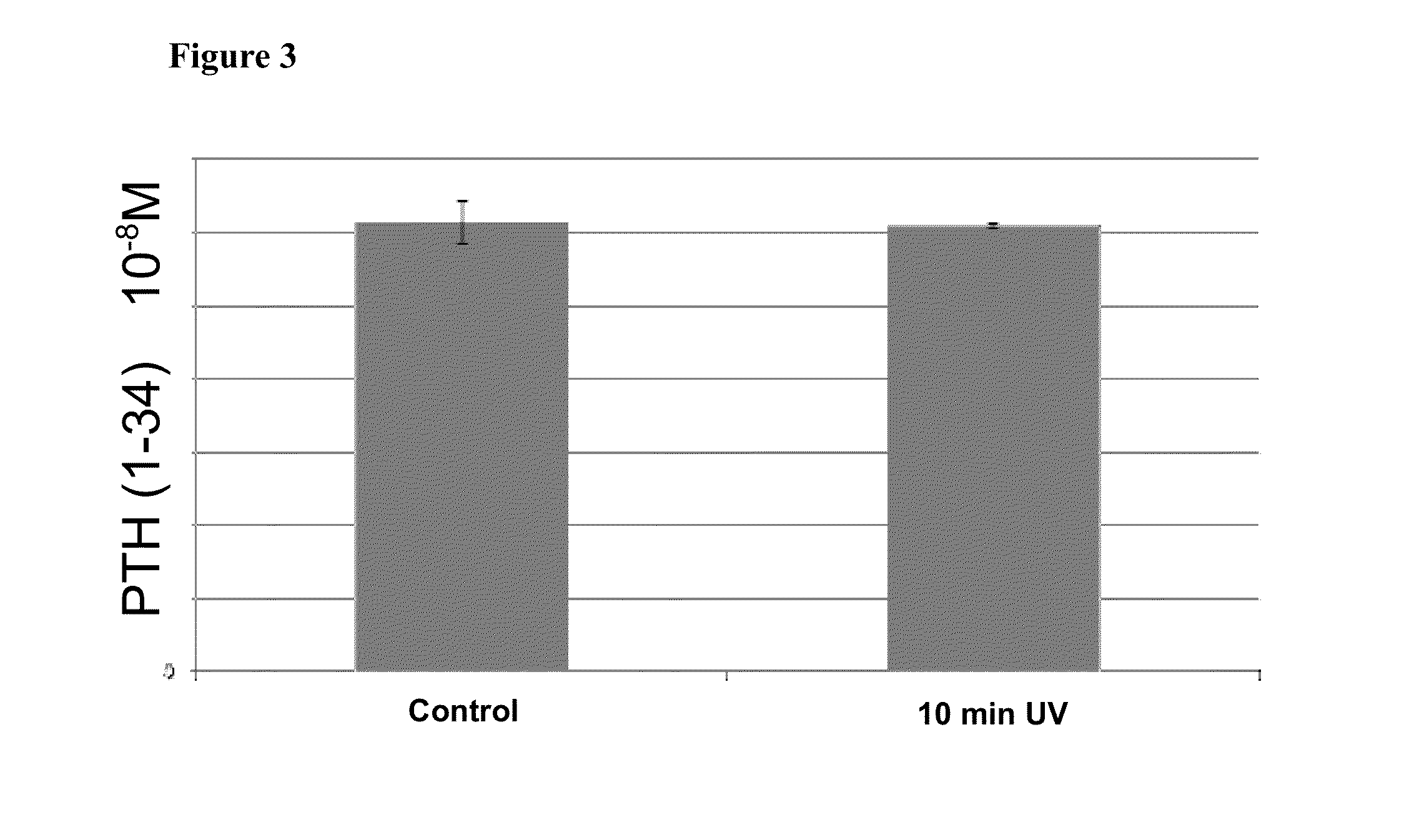Method for controlled release of parathyroid hormone from cross-linked hyaluronic acid hydrogel
a technology of hyaluronic acid hydrogel and parathyroid hormone, which is applied in the direction of peptides, drug compositions, peptides/protein ingredients, etc., can solve the problems of reducing the bioavailability of pth, affecting the treatment effect of patients, and causing more suffering for patients undergoing treatmen
- Summary
- Abstract
- Description
- Claims
- Application Information
AI Technical Summary
Benefits of technology
Problems solved by technology
Method used
Image
Examples
example 1
Hydrogel Preparation and Characterization
[0028]The hydrogel was fabricated by the photo-cross linking method. Briefly, 20 mg of methacrylated-hyaluronic acid (MeHA) was dissolved in 650 μL of stock solution (0.9% NaCl / 4 mM HCl / 0.1% BSA solution) and 100 μL of 0.07% (w / v) 12959 (Ciba specialty chemicals, Taiwan) was added to the solution. After complete dissolution, 250 μL of PTH(1-34) stock solution (10−5 M) was added to the polymer solution and mixed completely. The mixture was transferred into glass syringe and exposed under UV light for 10 minutes. The resulting PTH / CLMH gel was washed with distilled water and then lyophilized. The morphology of the gel was examined using scanning electron microscopy (SEM) after gold coating of the samples on a stub.
[0029]The encapsulation and release kinetics are as follows: 200 μL of PTH(1-34)-loaded CLMH hydrogel (PTH / CLMH gel) suspended in 1 mL of 0.9% NaCl was crushed completely and collected the supernatant. Concentration of PTH(1-34) on th...
example 2
In Vitro PTH(1-34) Release
[0031]In vitro PTH(1-34) release profiles from PTH / CLMH hydrogel were determined as follows: 200 μL of hydrogel was suspended in 1 ml releasing mixture (0.9% NaCl and 0.1% BSA containing hyaluronidase (10 unit / mL), pH=7.4). The suspensions were incubated at 37° C. with shaking. At designated time interval, 750 μL release medium was collected by centrifugation and replaced with equal amount of fresh releasing mixture. The concentration of PTH(1-34) in the release medium was measured by using a PTH(1-34) ELISA kit with PTH antibody coated wells following the manufacturer's recommendations (Immutopics, San Clemente, Calif.). Triplicate wells were used for each time point (first 24 h). Absorbance measurements read at 450 nm recorded by a microtiter plate reader were used to calculate the PTH(1-34) concentration by the log-logit method using the GraphPad Prisms program (GraphPad Software, San Diego, Calif.) with a standard curve.
[0032]The release kinetic data fr...
example 3
Bioactivity of Released PTH(1-34)
[0033]The activity of controlled released PTH(1-34) was determined by measuring cAMP contents in cells treated with released PTH(1-34). For these examples, the MC3T3-E1 (osteoblastic cells) was cultured in phenol red-free α-MEM supplemented with 10% fetal bovine serum and 50 mg / mL ascorbic acid. The Cells were seeded into 24-well plates at a density of 50,000 cells / well. 0.25 mM isobutylmethylxanthine was used to inhibit cAMP degradation and incubated with released PTH(1-34) for 20 mins. The cells were lysed directly in the medium by adding 0.1N HCl. Intracellular cAMP was measured using a commercially available immunoassay kit (cayman) following the manufacturer's instructions.
[0034]Statistical analysis: Three independent cultures for biochemical analysis were tested. Each example was repeated at least three times, and data (expressed as mean±SEM) from a representative example are shown. Statistical significance was evaluated by one-way analysis of ...
PUM
| Property | Measurement | Unit |
|---|---|---|
| Time | aaaaa | aaaaa |
| Molar density | aaaaa | aaaaa |
| Molar density | aaaaa | aaaaa |
Abstract
Description
Claims
Application Information
 Login to View More
Login to View More - R&D
- Intellectual Property
- Life Sciences
- Materials
- Tech Scout
- Unparalleled Data Quality
- Higher Quality Content
- 60% Fewer Hallucinations
Browse by: Latest US Patents, China's latest patents, Technical Efficacy Thesaurus, Application Domain, Technology Topic, Popular Technical Reports.
© 2025 PatSnap. All rights reserved.Legal|Privacy policy|Modern Slavery Act Transparency Statement|Sitemap|About US| Contact US: help@patsnap.com



